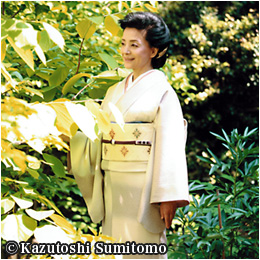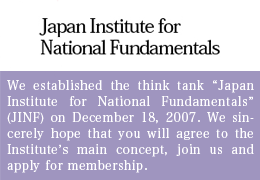US-CHINA CLASH OVER SOUTH CHINA SEA PROVIDES RARE OPPORTUNITY FOR JAPAN TO REINFORCE ITS POSITION
On May 20, a US P-8A surveillance aircraft flew over the Spratly Islands in the South China Sea. Images released globally the following day showed dozens of Chinese naval vessels deployed in the seas off the artificial islets the Chinese have created in the disputed islands. The number of vessels was much larger than I had anticipated, which reminded me acutely of the speed and scope with which China is carrying out reclamation and construction of infrastructure there.
As of now, China is in the process of seizing five of the islets. Photographs of the Chinese land reclamation on Hughes Reef, released by the Vietnamese government, show a nine-story building under construction, while images provided by the Vietnamese and Philippines governments attest to a 3,000-meter (roughly 10,000 feet) airfield being built. China is also building a heliport on Gaven Reef and a runway on Fiery Cross Reef.
Although the state-of-the-art Poseidon surveillance planes have not yet gone within the 12-mile territorial limits claimed by China around the artificial islets, DOD spokesman Colonel Steve Warren said this could happen in the future. Further tension in the area is likely, depending on how China reacts. The Global Times, an English-language affiliate of the People’s Daily, reported on May 25 that war between the US and China over the South China Sea is unavoidable. One must expect what happens in the South China Sea to likely happen in the East China Sea as well.
A responsible government must make preparations to respond to such a threat. The DOD has submitted an unprecedented US$585.3 billion fiscal 2016 funding request to Congress—a 4.4% increase over fiscal 2015. Starting in fiscal 2014, the Pentagon’s budget was to have been cut back in view of the chronic fiscal deficits of the US government and reductions in the scope of US military deployments overseas. The latest funding request by the DOD is an attempt to restore its budget to previous levels.
Has the Obama administration by any chance belatedly come to realize that diplomatic negotiations alone can hardly resolve anything in terms of the military threat from China? Visiting Annapolis, Maryland on May 22 for the graduation ceremonies at the US Naval Academy, Vice President Joe Biden declared:
“In the disputed waters of the South China Sea, the United States does not privilege the claims of one nation over the other, but we do unapologetically stand up for the equitable and peaceful solution of disputes and for the freedom of navigation.”
One is not quite sure to what extent the US under the Obama administration will be able to “stand up” in this case. However, the expression Biden himself used—that the US will “unapologetically stand up”—comes as a surprise in light of the many pro-Chinese remarks attributed to him. In fact, Biden has to this point been receptive to Beijing’s appeal for a “new type of major nation relationship” with Washington.
China as Major Ally, Japan as Afterthought
Beijing asserts that the proposed new bilateral relationship with Washington calls on both nations to mutually respect their core interests. Among its own core interests, China claims Tibet, Uyghur, Taiwan, the South China Sea, and the Senkaku Islands. But the Senkakus are clearly covered under the US-Japan Security Treaty, which is undeniably incompatible with Beijing’s proposed new relationship with Washington. And yet, in his five and a half hour talk with Chinese President Xi Jinping in Beijing on December 4, 2013, Biden reportedly ended up accepting China’s proposal for such a relationship.
During his meeting with Xi at the Great Hall of the People, Biden remarked: “…this new model of major country cooperation ultimately has to be based on trust and a positive notion about the motive of one another.”
Biden also was quoted as noting that “this new relationship requires practical cooperation to deliver concrete results. We’ve done much of that already.” While demonstrating an almost nonchalant respect and strong affinity for China, however, Biden has always followed a course of action reflecting a stunning lack of understanding of Japan. In the evening of December 12, 2013, for instance, Biden called Prime Minister Shinzo Abe from Washington after winding up a visit to Tokyo and Seoul, repeatedly urging him to refrain from visiting Yasukuni Shrine. “I’ve told President Park Guen-hye I don’t think you would visit Yasukuni,” Biden was quoted by the Sankei Shimbun as saying in its January 30, 2014 edition. “If you can somehow indicate that you will not be visiting the shrine, I feel that President Park will be willing to meet you.”
Abe replied instantly: “I have always felt that it was a matter of extreme regret that I failed to visit Yasukuni during my first administration. A visit to the shrine is what I’ve promised the people of Japan.”
Shortly after Abe visited Yasukuni on December 26—two weeks after his telephone conversation with Biden—the State Department issued a statement harshly critical of Abe, declaring that Washington was “disappointed” by his move. Reportedly, it was Biden who was adamant about releasing the statement. But now, even Mr. Biden appears to have changed his posture toward Beijing, vowing the US will “unapologetically stand up” against any attempts to change the status quo in the South China Sea. Obviously, America is shifting its policy in Asia.
During the period between the two world wars, the US took a blatantly pro-China policy, treating Japan harshly. In his monumental American Diplomacy (University of Chicago Press, 1951), George Kennan, who advocated the Soviet containment strategy, reviews US policy toward the Far East of those times:
“Remember the bulk of our diplomatic activity was activity designed to deflect other powers, notably the Japanese, from the pursuit of specific courses of action we did not like…we hacked away, year after year, decade after decade, at the positions of other powers on the mainland of Asia, and above all the Japanese…”
The US, which thought nothing of rubbing the Japanese the wrong way at the time, kept up an entirely opposite, i.e. compassionate and generous, posture toward the Chinese. Remarks Kennan about this point:
“Unquestionably, our relation to the peoples of the Far East has been colored by a certain sentimentality toward the Chinese…There is something patronizing in this attitude of ours.”
Isolation of Obama’s Diplomacy
American occupation forces imposed extraordinarily stringent measures on Japan after its defeat in the Greater East Asian War, adopting a policy that made Japan a virtual colony. This policy sought to destroy all traditional Japanese values and forever refuse to allow Japan to regain true independence. The new sense of values generated by the Americans, under which efforts to interminably weaken Japan and place it under lasting American control were construed as justice, took root as the cornerstone of a “weak Japan” policy.
A special characteristic of this mindset, still deeply imbedded in the subconscious of many Americans engaged in US-Japan relations, is a view that a ‘weak Japan’ should be the right state of the nation. They strongly object to any efforts on the part of Japanese to revise the constitution, visit Yasukuni Shrine, or view historical facts accurately and fairly—
including the so-called “comfort women” issue. This “weak Japan” faction also includes Americans who, as pointed out by Kennan, are inclined to emotionally align themselves with the Chinese and view China as America’s best strategic partner in Asia.
Members of the Obama administration were fundamentally in the same boat. But they apparently are in the process of changing now. It would be safe to say Obama’s foreign policy missteps have brought about this change.
Among other things, Obama failed to take the initiative in helping to stabilize the Middle East following the chaos that developed during the democratization movements in the region. By declaring that the US was no longer the world’s policeman in September 2013, Obama gave impetus to the rise of global terrorist forces. Mistrust of the US on the part of the Arab oil states has never been stronger. Taking advantage of Obama’s do-nothing policy, Russia has deprived Ukraine of the Crimean Peninsula, while China continues to move ahead with its plans for expansion in the South China Sea with blistering speed. And now European members of the G7 nations have joined the Asia Infrastructure Investment Fund under China’s one-party dictatorship.
In the Middle East, Europe, the Eurasian Continent, and the South China Sea, Obama’s diplomatic efforts have come to a dead end, and the US has become precariously isolated. Under such circumstances, the Obama administration has perhaps finally awakened to the realization that strengthening America’s alliance with Japan—rather than entrusting its dream to a new major nation relationship with China—will definitely be the surer path to safeguarding its national interests. Solidifying its alliance with the US, Japan is blessed with a “once in a century” opportunity to again be a “normal nation” and exert great power as a responsible leader in the Asia-Pacific region.
(Translated from “Renaissance Japan” column no. 657 in the June 4, 2015 issue of The Weekly Shincho)








